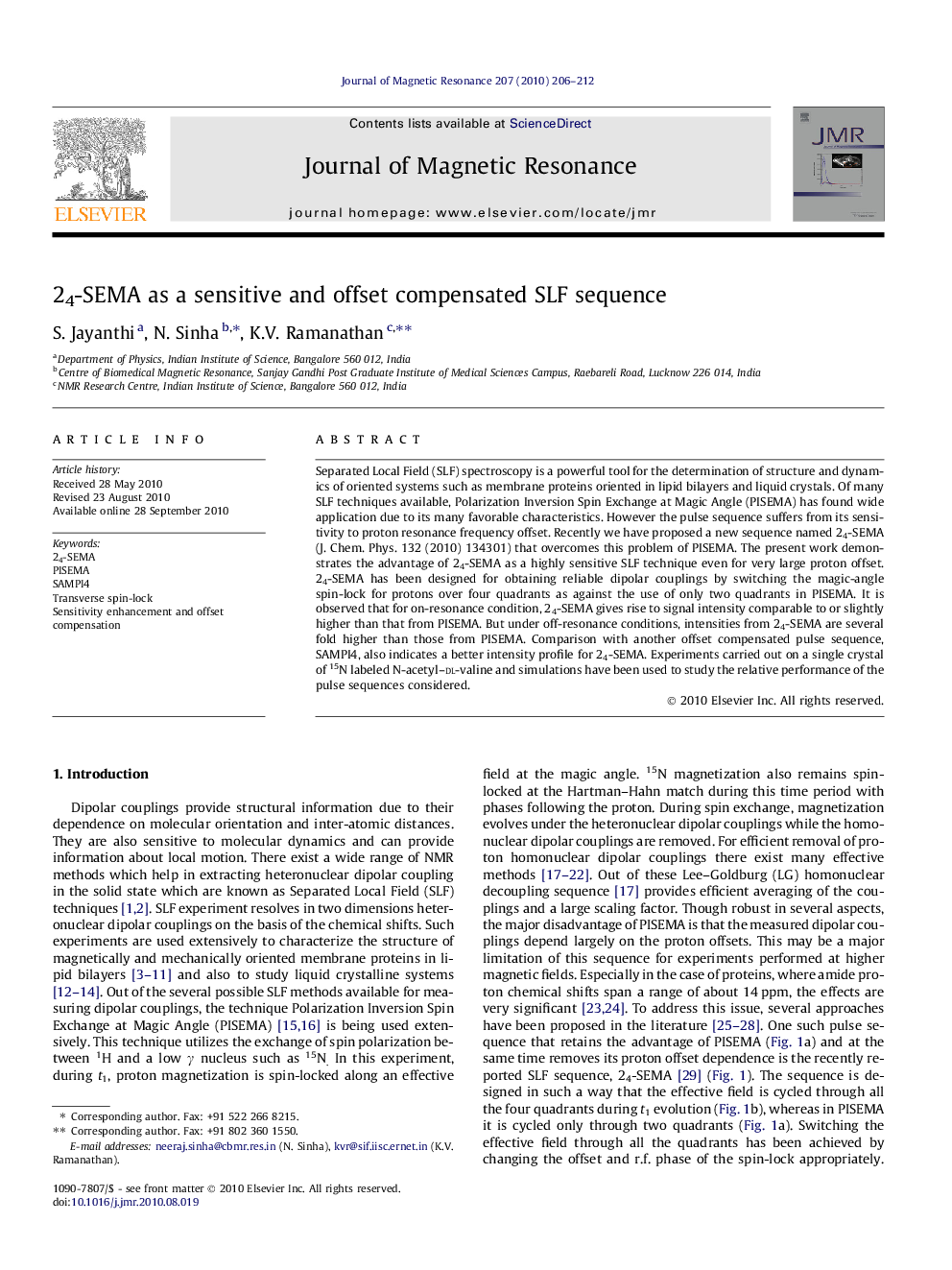| Article ID | Journal | Published Year | Pages | File Type |
|---|---|---|---|---|
| 5406449 | Journal of Magnetic Resonance | 2010 | 7 Pages |
Abstract
Separated Local Field (SLF) spectroscopy is a powerful tool for the determination of structure and dynamics of oriented systems such as membrane proteins oriented in lipid bilayers and liquid crystals. Of many SLF techniques available, Polarization Inversion Spin Exchange at Magic Angle (PISEMA) has found wide application due to its many favorable characteristics. However the pulse sequence suffers from its sensitivity to proton resonance frequency offset. Recently we have proposed a new sequence named 24-SEMA (J. Chem. Phys. 132 (2010) 134301) that overcomes this problem of PISEMA. The present work demonstrates the advantage of 24-SEMA as a highly sensitive SLF technique even for very large proton offset. 24-SEMA has been designed for obtaining reliable dipolar couplings by switching the magic-angle spin-lock for protons over four quadrants as against the use of only two quadrants in PISEMA. It is observed that for on-resonance condition, 24-SEMA gives rise to signal intensity comparable to or slightly higher than that from PISEMA. But under off-resonance conditions, intensities from 24-SEMA are several fold higher than those from PISEMA. Comparison with another offset compensated pulse sequence, SAMPI4, also indicates a better intensity profile for 24-SEMA. Experiments carried out on a single crystal of 15N labeled N-acetyl-dl-valine and simulations have been used to study the relative performance of the pulse sequences considered.
Related Topics
Physical Sciences and Engineering
Chemistry
Physical and Theoretical Chemistry
Authors
S. Jayanthi, N. Sinha, K.V. Ramanathan,
